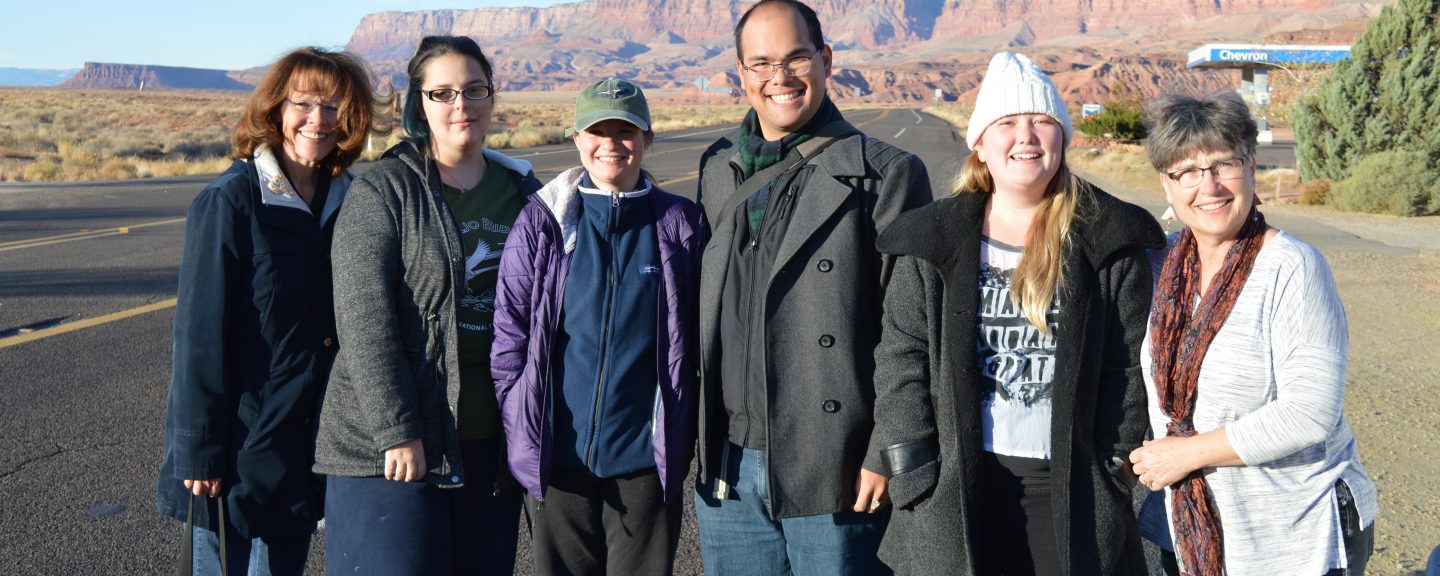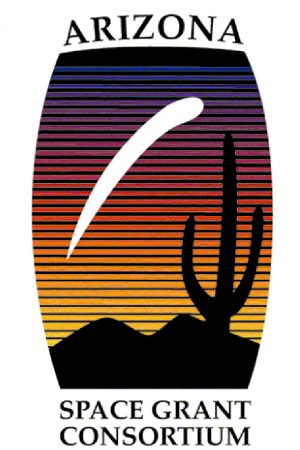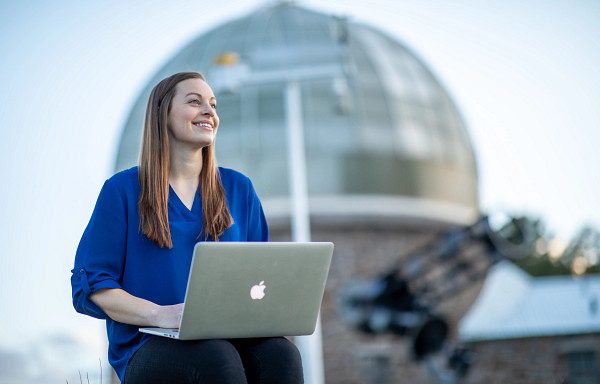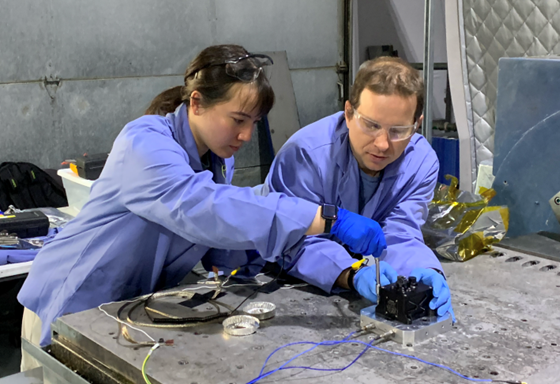NAU/NASA Space Grant
-
Information for Interested Students Tab Open
-
Information for Interested Mentors Tab Closed
-
Available Research Opportunities Tab Closed
-
Astronomy Education and Outreach in Northern Arizona Tab Closed
-
Contact Us Tab Closed
Information for Interested Students Accordion Open
Student Application Dates and Deadlines
- Student Applications open in early February
- Student Applications close at the end of February
- No late submissions are accepted, online applications open and close promptly at specified times above
- Student Internship Offers are extended throughout the month of April
- Student Offer Acceptance Deadline is in early May
About Our Program
NASA Space Grant is a nationwide program funded by NASA. It is designed to develop the young minds of STEM graduate and undergraduate students into thinking beyond the classroom by actively performing NASA related research alongside a faculty mentor. Our program at Northern Arizona University provides undergraduate internships to exceptional students interested in promoting the understanding of space-related research to the public. We are located in the Department of Astronomy and Planetary Science. The Northern Arizona University NASA Space Grant Program is a part of the statewide Arizona Space Grant Consortium.
The NAU NASA Space Grant Fellowship Program currently provides an graduate fellowship to an NAU graduate student pursuing a PhD in Astronomy and Planetary Science at Northern Arizona University. The goals of the Fellowship Program are to encourage individuals to pursue graduate education in Astronomy and Planetary Science, and to support NASA-related research happening at the University. If you are interested in our fellowship program please click here. Information below pertains to our internship program only.
Student Eligibility
Students who apply to other Government Funded Internship Programs must ultimately choose which funding award to accept. Students can NOT accept multiple funding sources for their research projects when accepting NASA Space Grant Funding. In order to be eligible, students must be a:
- citizen or permanent resident of the United States or its possessions AND
- be enrolled in an undergraduate degree program at NAU
This is a Fall/Spring Internship. Students graduating prior to the start of the spring semester of the internship are not eligible.
What is Required of you as an Intern
Curiosity, motivation, professionalism, good communication, and a commitment to learn and contribute are a must. Internships begin with an orientation that takes place at the beginning of the academic year early in the Fall semester and culminate with a statewide Undergraduate Research Symposium at the end of the spring semester. These two meetings are mandatory. Several weeks in advance of the symposium, each intern is required to submit a brief abstract summarizing internship work for the formal symposium book of abstracts, and an associated PowerPoint presentation. Interns are also asked to complete tracking forms at the orientation and an online program evaluation at the end of the first semester. Attending the orientation, symposium, and submitting the few noted deliverables represents your commitment required by NASA Space Grant. All other commitments are defined and agreed upon by you and your mentor when you establish your working relationship at the beginning of the academic year.
Matching Interns to Projects
Mentors will rank their intern applications based on the content and quality of the students responses to three open-ended questions. GPA, motivation for applying, interest-level, potential, and involvement (work, volunteerism, other activities) are also considered. Experience is NOT a factor in the selection process as the internship is designed to provide first research opportunities.
Internship Locations
NAU/NASA Space Grant Internship/Fellowship opportunities are offered at multiple locations across Flagstaff, Arizona as well as on campus each year.
Project Funding and Pay
This internship is funded by NASA Space Grant, and whenever possible, through the generous contributions of mentors. The NAU/NASA Space Grant Undergraduate Research Internship program works hard to engage the largest number of students possible. Each year, we are able to extend the internship funding base to a larger group of undergraduates through much appreciated financial assistance provided by mentors who are able to full-fund or split-fund their interns. Interns may work may work a maximum of 10 hours/week @ $16.00/hr over the Fall and Spring semesters (30 weeks). Total funding award equates to $4,800.
Information for Interested Mentors Accordion Closed
Mentor Research Proposal Due Dates and Deadlines
- Mentor Applications open in early December
- Mentor Applications close in late January
- No late submissions are accepted, online applications open and close promptly at specified times above
- Mentor Project Awards are extended throughout the month of February
- Mentor Project Acceptance Deadline is in early March
About Our Program
NASA Space Grant is a nationwide program funded by NASA. It is designed to develop the young minds of STEM graduate and undergraduate students into thinking beyond the classroom by actively performing NASA related research alongside a faculty mentor. Our program at Northern Arizona University provides undergraduate internships to exceptional students interested in promoting the understanding of space-related research to the public. We are located in the Department of Astronomy and Planetary Science. The Northern Arizona University Space Grant Program is a part of the statewide Arizona Space Grant Consortium.
The NAU NASA Space Grant Fellowship Program currently provides an graduate fellowship to graduate student pursuing a PhD in Astronomy and Planetary Science at Northern Arizona University. The goals of the Fellowship Program are to encourage individuals to pursue graduate education in Astronomy and Planetary Science, and to support NASA-related research happening at the University. If you are interested in our fellowship program please click here. Information below pertains to our internship program only.
Mentor Eligibility
At this time, in order to be eligible to mentor, you must be:
- a citizen or permanent resident of the United States or its possessions
- an NAU staff/faculty member or employee of USGS, Lowell Observatory or Arizona Daily Sun
- able to supply 7-10 hours a week August-April of work to your student intern
Mentor Requirements
Mentors commit to providing interns the opportunity to broaden their educations with a rich, hands-on experience with the full process of inquiry and discovery. Whatever the internship emphasis – research, research & development, science writing, science policy, or science education – the mentor will work to provide an environment where the intern can learn and experience the research process from start to finish. In some cases, interns will join existing projects. In others, the project will evolve as the student’s interests and skills and the mentor’s needs come together. The mentor acts as a guide, encouraging the intern to understand the discovery process, learn the fundamentals necessary to succeed, and ultimately drive the experience.
Mentors attend an orientation at the beginning of the year regardless if they have not done so in the past. They assist in preparing the intern for the statewide Undergraduate Research Symposium at the end of the spring semester, including the brief abstract and PowerPoint presentation. Mentors are invited to participate in some Space Grant-organized activities during the year and to attend the Symposium and banquet at the end. The day-to-day interaction between the intern, the mentor, and the mentor’s team (where applicable) are defined and agreed upon by the intern and mentor as part of establishing a working relationship at the beginning of the academic year.
- ALL Mentors must submit a NAU-NASA Application for Research Mentorship by the deadline. Please note that you may only submit one project and have one student for this internship per year; multiple applications will not be considered by the Space Grant Steering Committee.
- Mentors can coordinate with a Student prior to applying to the program and indicate the student on their NAU-NASA Application for Research Mentorship or request us to match them with a student intern.
- It is desired that the research further NASA’s mission in some way.
- Applications will be reviewed by our Steering Committee in April and they will determine which projects are selected.
- ALL Mentor project descriptions are posted online during student application process.
Project Alignment Requirements
The NAU/NASA Space Grant Program has increased efforts to highlight our programs’ alignment with the 5 NASA Mission Directorates (MDs). All AZSGC-funded projects are required to align with one or more NASA MDs. Please review this NASA Mission Directorate pdf document to find out more about all four NASA MDs before choosing which MD(s) and research priority area(s) your project most closely aligns with. You will need to indicate this on your mentor program agreement form if you are awarded funding.
Project Funding
This internship is funded by NASA Space Grant, and whenever possible, through the generous contributions of mentors.
Please also keep in mind students who receive NAU/NASA Space Grant funding may not accept other NSF or Gov funding from other program at NAU.
The NAU/NASA Space Grant Undergraduate Research Internship program works hard to engage the largest number of students possible. Each year, we are able to extend the internship funding base to a larger group of undergraduates through much appreciated financial assistance provided by mentors who are able to full-fund or split-fund their interns. Interns may work may work a maximum of 10 hours/week over the Fall, Winter and Spring semesters. Thus, full-funding an intern for 30 weeks at 10hrs/week amounts to $$4,800 ($16.00/hr x 300hrs), while split-funding an intern (split funding indicates your funding will cover 50% of the student’s salary) amounts to $2,400. The highest ranked applicants are awarded NASA Space Grant Internships to work with faculty or professional mentors for the forthcoming academic year.
Matching Students to Projects
Before the application due date, faculty and professionals interested in mentoring motivated undergraduates submit an online application defining their potential research project.
Mentors are able to:
- pre-select a student for their project [reserved project] when they submit an application or
- not-select a student for their project [open project] when they submit an application which allows all interested students to apply to their project
The goal is to provide a new and rich experience to the applicant. Mentors are then responsible for reviewing all intern applications based on the content and quality of the applicant’s responses to three open-ended questions. GPA, motivation for applying, interest-level, potential, and involvement (work, volunteerism, other activities) should also be considered. (Experience should not a factor in the selection process as the internship is designed to provide first research opportunities).
Ultimately NAU/NASA Space Grant provides the lists of qualified students to each of the chosen mentors and then let them make the final choice of who they want to work with.
Available Research Opportunities Accordion Closed
Student Application Instructions & Available Projects
1. Scroll down this page to view the list of available internships and links to project descriptions below to view ALL openings.
2. Click the “Project Number” link of each project you are interested in to read through the research project proposal description submitted by the mentor.
3. Identify the internship(s) you are interested in by project number (you can list up to 2 on your online application if you choose).
4. Make sure the project(s) you are interested in are open and accepting applications and not reserved for a selected student already.
5. Fill out your online student application.
2025-2026 Available Research Opportunities
| Mentor | Location | Title | Number | Open/Reserved |
|---|---|---|---|---|
| Dr. Jennifer Wade | NAU Main Campus | Low Pressure Carbon Dioxide and Water Separations | Project 1 | Open |
| Dr. Carlo daCunha | NAU Main Campus | Amoebot: A Soft Robotic Platform for AI and Swarm Research | Project 2 | Open |
| Dr. Chris Doughty & Dr. Matt Bowker | NAU Main Campus | Legacy of life – is there a stochiometric biosignature within Martian mudstone? | Project 3 | Reserved |
| Dr. Subhayan De | NAU Main Campus | AI and Machine Learning-Driven Innovations in Space Structures | Project 4 | Open |
| Dr. Keith Nowicki | NAU Main Campus | Optical telescope design investigation for orbital research | Project 5 | Open |
| Dr. Will Grundy | NAU Main Campus & Lowell Observatory | Laboratory Study of Cometary Volatiles During Migration from the Kuiper Belt | Project 6 | Reserved |
| Dr. Greg Vaughan | USGS Astrogeology Science Center | Characterizing Volcanic Geothermal Areas using Thermal Infrared Remote Sensing | Project 7 | Open |
| Dr. Mike Gowanlock & Dr. Chris Doughty | NAU Main Campus | Constraining potential habitable worlds evolutionary stage using spatially resolved climate simulations | Project 8 | Open |
| Dr. Jean-Francois Smekens | NAU Main Campus | Morphometric study of distributed volcanic fields in the Southwestern USA with high-resolution topography data | Project 9 | Open |
| Dr. Jean-Francois Smekens | NAU Main Campus | Quantifying the optical properties of volcanic ash to improve satellite retrievals | Project 10 | Open |
Astronomy Education and Outreach in Northern Arizona Accordion Closed
Astronomy Education and Outreach in Northern Arizona

Astronomy Education and Outreach in Northern Arizona (AEON) provides hands-on space science lessons/activities to teach concepts of physics and astronomy and engineering to pre-college students at K-12 schools throughout northern Arizona. The project is operated in partnership with the NAU/NASA Space Grant, the Department of Astronomy and Planetary Science and the College of the Environment, Forestry, and Natural Sciences.
In conjunction with daytime classroom visits, we can also set up telescopes for a night-time viewing event for your school community. Please keep in mind that night-time viewing begins about 45 minutes after sunset and requires a clear sky. Additionally, for K-5 schools, we can bring Family Science Night Activities to be set up inside (in a gym, cafeteria or multi-purpose room).
- There are no charges for program services are made available through NAU/NASA Space Grant at Northern Arizona University.
- The Astronomy Education & Outreach can be requested by a teacher at any reservation school in Arizona to supplement his or her classes during the academic year.
- The Astronomy Education & Outreach is scheduled on a first-come, first-served basis.
- The Astronomy Education & Outreach provides telescopes for solar viewing and evening star parties.
- Unless otherwise noted, each of the above activities takes about an hour.
Please Contact Mary Lara via email to schedule a site.
Mary Lara, M.A.
Program Coordinator
NAU/NASA Space Grant Program
Astronomy Education and Outreach in Northern Arizona
Email: Mary.Lara@nau.edu
Available K-12 Astronomy Education and Outreach in Northern Arizona Lessons
Please scroll through using the arrows on the bottom on the table to view all lessons.
| Grade | 1st Lesson | 2nd Lesson | 3rd Lesson | 4th Lesson |
|---|---|---|---|---|
| Kindergarten | Day/Night (45 minutes) | Measuring Temperatures* | - | |
| 1st Grade | UV Bead Inquiry | Mirror, Mirror | Nefertiti the Spidernaut | - |
| 2nd Grade | Play-Doh size model of Earth, Moon and Mars | Where is Saturn in the Solar System? Where am I in the Solar System? (45 minutes) | I Want to be an Astronaut (Students learn about traits needed to be an astronaut and practice those traits at centers) | Fun with Tangrams! |
| 3rd Grade | Telescope Basics (Reflecting/Refracting) followed by solar observing | Mirror Moon | Does Matter Matter? | - |
| 4th Grade | Model night/day/year and seasons (we need a darkened area where students can form a large circle – desks or tables can be moved to the middle of the classroom) | Model Lunar Phases/Month (we need a darkened area where students can form a large circle – desks or tables can be moved to the middle of the classroom) | Construct a Moon Finder (45 minutes) | |
| 5th Grade | Play-Doh size model of the solar system (75 minutes) | The Scoop on Moon Dirt (90 minutes which could be divided into two 45-minute blocks) | The Story of Pluto | Clues to the Cosmos (Using Filters) |
| 6th Grade | Talk about the Sun with an emphasis on UV radiation, followed by solar observing | Cratering | Construct Galileoscopes – this activity should be followed by an evening star party | “Houston, We Have a Problem” – Using Apollo 13 as a springboard, students use the engineering design process to create a landing craft for an “egg-stronaut” |
| 7th Grade | Construct a distance model of the solar system using string and beads (90 minutes, which can be broken into two 45-minute sessions, or the students may complete the model at home) | Mission Moon | Invisible Universe: Investigating the Electromagnetic Spectrum | Construct Planeshpheres (Starfinders) *This activity should be followed by a star party. |
| 8th Grade | Build a comet (Dependent on availability of dry ice) | Mission Patches | Marsbound: Mission to the Red Planet (This activity takes two full class periods) | Lava Layering |
| High School | Newton's Laws and Rockets: Alka-Rockets, Straw Rockets, Bottle Rockets, and Stomp Rockets | - | Marsbound: Mission to the Red Planet (This activity takes two full class periods) | - |
Contact Us Accordion Closed

Christopher S. Edwards, Ph.D.
Program Associate Director
NAU/NASA Space Grant Program
Department of Astronomy and Planetary Science
Email: Christopher.Edwards@nau.edu
Phone: (928) 523-7234


